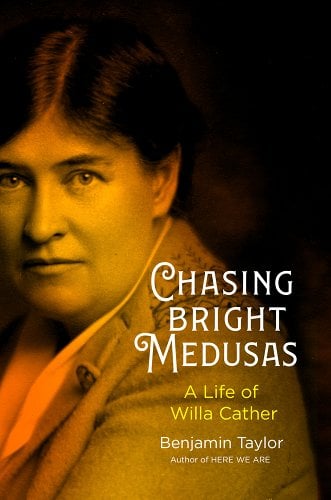Cather was drawn to what a frame could achieve: she could put words and thoughts in another (usually male) figure’s mouth and pen, she could pile up the negatives, and she could insert a tiny, distancing hiccup of time and space (A Lost Lady: “Thirty or forty years ago, in one of those grey towns along the Burlington railroad, which are so much greyer today than they were then, there was a house well known from Omaha to Denver for its hospitality and for a certain charm of atmosphere”). Her most accomplished melding of form and feeling, The Professor’s House (1925), crawls through a long tracking shot of the ugly, ash-colored three-story structure in question: its creaky steps, the “bumptious wooden balls” on its “awkward oak mantels,” the ancient bathroom slathered ineffectively with paints that are “advertised to behave like porcelain” but don’t, all apt setups for the attic sewing room where an alienated historian of the Spanish conquest, Godfrey St. Peter, will produce his work (and narrowly avoid a kind of gassing suicide by proxy) amid the mannequins and “forms” the family seamstress Augusta uses to produce the dresses for the women of the house. In four or five pages, the house is turned into both metaphor and metonym. If winding up a novel could give Cather fits—Randolph Bourne wrote of The Song of the Lark (1915) that the book should have ended two hundred pages earlier, and, as was usually the case with Randolph Bourne, he was right, and she fussed with the ending again and again in later editions—Cather possessed an inerrant sense of how to begin that never seemed to fail her.
Cather’s fascination with her own beginnings fueled her imagination. The burdens of returning to a lost past and the ambivalent victories of escape are recurring themes in her work. Life on the prairie was always a dire struggle to set down roots, to domesticate a fiercely indifferent landscape. It’s no wonder that the most epiphanic moments in her life and in those of her characters are triggered by the encounter with the traces left by others who struggled similarly—most memorably, the long-abandoned cliff-dwelling complex of the Anasazi in Arizona, which becomes a place of moral and aesthetic rebirth for Thea Kronborg in Song of the Lark and Tom Outland in The Professor’s House (just as it did in Cather’s own life). If, like Jim Burden and Thea, Cather got out of the dusty little hamlet of Red Cloud, Nebraska, at the first opportunity, Red Cloud never left her. “The town would be transubstantiated into Hanover in O Pioneers!, Moonstone in Song of the Lark, Black Hawk in My Ántonia, Frankfort in One of Ours, Sweet Water in A Lost Lady, and Haverford in Lucy Gayheart,” Benjamin Taylor writes in Chasing Bright Medusas, his wafer-slim new biography of Cather. She “kept faith with the genius loci of her youth.” The look back was often melancholy. It’s no surprise that a later section of My Ántonia will see Burden reading Virgil’s Georgics and ruminating on those childhood days with the poet’s Optima dies . . . prima fugit: “the best days are the soonest gone.”
